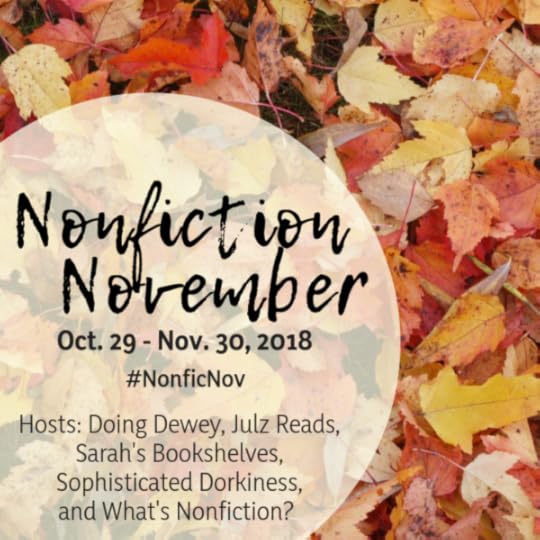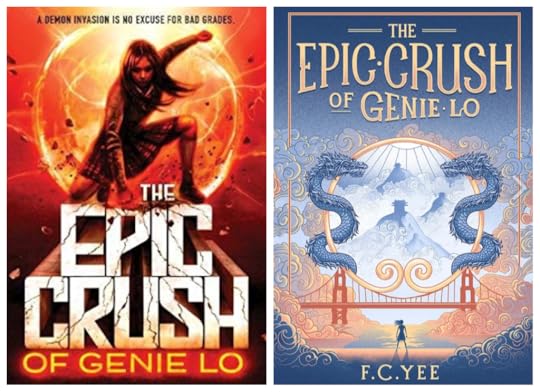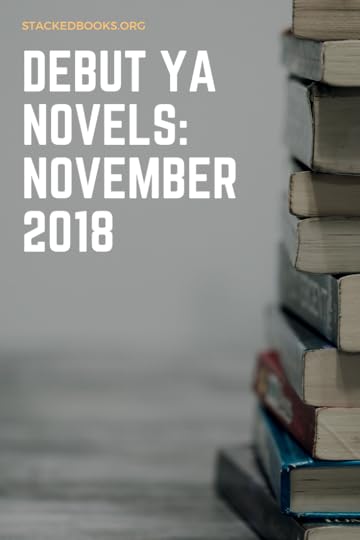Kelly Jensen's Blog, page 37
November 29, 2018
This Week at Book Riot
I really like what I’ve written this week. Does anyone else find this happens to them? You write a lot, but sometimes, you realize you’ve really nailed something and you have a moment of realizing you like what it is you do? It’s a nice feeling.
I flexed my reporting skills for this piece over on Book Riot, which explores why paper for books is getting harder to come by and what that might mean for the future price — and reprint availability — of books. I worked on this one with fellow Rioter Tirzah Price and am exceptionally proud of it.
A reflection on the simple question that has powerful implications for weeding one’s personal books.
Elsewhere on the web this week:
A lovely piece by Margaret McKinnis, who interviewed me about (Don’t) Call Me Crazy when I was out for an event in Ithaca, courtesy of The Sophie Fund. We did this interview in a cat cafe and Margaret is one awesome interviewer and writer I can’t wait to see more from.
November 27, 2018
Self-Published YA in the Public Library
Wrangling self-published books for teens can seem like a daunting task for a public librarian (meaning: me). There are a lot of very popular self-published YA novels, mostly series or continuations of traditionally-published series, that get a lot of teen readership but never make it to review journals or even vendor websites. Learning what these are is a challenging first step; making a decision to purchase without the usual backups (publisher/author reputation, professional reviews, reading it yourself) is another challenge. Very many of these straddle the YA/NA line (we do not put New Adult in our teen collection), and that’s yet another facet to tackle. Luckily, there are a number of teens in my community who are more than happy to request the books they want, whether they do it through our online form or via another staff member.
Below are the titles and series I have gotten the most requests for and seem to be the most popular. They circulate really well; it’s clear teens are telling their friends about them. In fact, that’s often what they write on the request form: “recommended by a friend.” What self-published YA titles do well in your library, and how generous are you when you buy something that’s more or less an unknown quantity?
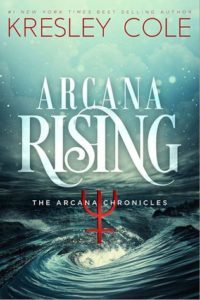 Arcana Rising, The Dark Calling, and From the Grave by Kresley Cole
Arcana Rising, The Dark Calling, and From the Grave by Kresley ColeThe Emperor unleashes hell and annihilates an army, jeopardizing the future of mankind–but Circe strikes back. The epic clash between them devastates the Arcana world and nearly kills Evie, separating her from her allies. With Aric missing and no sign that Jack and Selena escaped Richter’s reach, Evie turns more and more to the darkness lurking inside her. Two Arcana emerge as game changers: one who could be her salvation, the other her worst nightmare. To take on Richter, Evie must reunite with Death and mend their broken bond. But as she learns more about her role in the future–and her chilling past–will she become a monster like the Emperor? Or can Evie and her allies rise up from Richter’s ashes, stronger than ever before?
These three books are self-published continuations of Cole’s traditionally-published Arcana Chronicles.
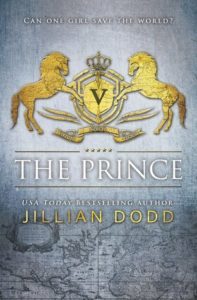 Spy Girl by Jillian Dodd
Spy Girl by Jillian DoddAn eighteen-year-old covert agent is pulled out of training before graduation by Black X, a espionage group so secret even the President of the United States doesn’t know it exists.
For her first mission, she must go undercover as the long-lost daughter of a recently deceased billionaire, infiltrate high society, and protect the Prince of Montrovia from assassination. But Prince Lorenzo is known as the Playboy Prince for a reason and his sensuality and charisma add a whole other level of complication to her mission.
She knows that her every move is being watched, but what she doesn’t know is that the Prince is just a chess piece in a bigger game that will have world-wide ramifications. And that Blackwood Academy, the place she has called home for the past six years has secrets of its own.
This is a 7-book self-published series.
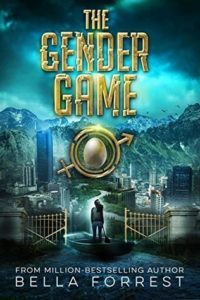 The Gender Game by Bella Forrest
The Gender Game by Bella ForrestA toxic river divides nineteen-year-old Violet Bates’s world by gender. Women rule the East. Men rule the West. Ever since the disappearance of her beloved younger brother, Violet’s life has been consumed by an anger she struggles to control. Already a prisoner to her own nation, now she has been sentenced to death for her crimes. To enter the kingdom of Patrus, where men rule and women submit. Everything about the patriarchy is dangerous for a rebellious girl like Violet. She cannot break the rules if she wishes to stay alive. But abiding by rules has never been Violet’s strong suit. When she’s thrust into more danger than she could have ever predicted, Violet is forced to sacrifice many things in the forbidden kingdom … including forbidden love.
This is a 7-book self-published series.
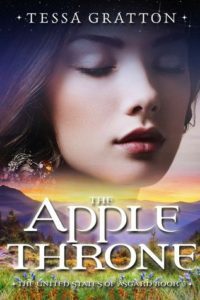 The Apple Throne by Tessa Gratton
The Apple Throne by Tessa GrattonThere is only one person in the whole world who remembers the famous prophet Astrid Glyn: the berserker Soren Bearstar.
Ever since Astrid agreed to give up her life, her name, and even her prophetic dreams to become Idun the Young, the almost-goddess who protects the apples of immortality in a secret mountain orchard, she’s been forgotten by everyone. Everyone except Soren.
For the last two years he’s faithfully visited her every three months. Then one day he doesn’t come. Though forbidden to leave the orchard, Astrid defies the gods by escaping with a bastard son of Thor to find Soren. But ancient creatures are moving in the mountains beneath the country. They are desperate to leave the shadows and Astrid’s quest might be the key they need.
Not-quite-a-goddess, but no longer only a girl, Astrid must choose a path that will save herself and the people she loves without unraveling the ancient magic that holds the entire nine worlds together. Welcome to the final chapter of the United States of Asgard.
This is the final book in the United States of Asgard trilogy whose first two books were traditionally published. Gratton has since re-released the first two as self-published titles as well.
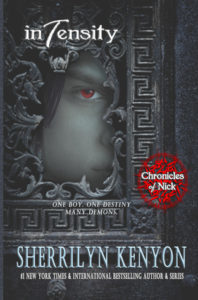 Intensity by Sherrilyn Kenyon
Intensity by Sherrilyn KenyonIt’s a demon-eat-demon world for Nick Gautier. Just when he thinks he’s finally gotten a handle on how not to take over the world and destroy it, Death returns with an all-star cast that is determined to end the Malachai reign and lineage forever. Worse? Death and War have found the one, true enemy Nick can’t find, and even if he did, it’s one he could never bring himself to banish or kill.
Now framed for murders he hasn’t committed, and surrounded by new friends who might be turncoats, Nick is learning fast how his father went down in flames.
The heat in New Orleans is rising fast, and Nick’s threat-level has gone into a whole new level of intensity. He’s learning fast that when War and Death decide to battle, they don’t take prisoners. The don’t negotiate. And they’re both immune to his biting sarcasm and Cajun charm. To win this, he will have to embrace a new set of powers, but one wrong step, and he will belong to the side of Darkness, forever.
This book is a self-published continuation of Kenyon’s Chronicles of Nick.
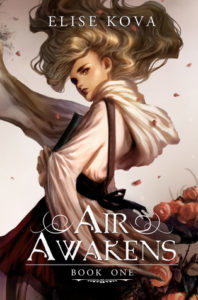 Air Awakens by Elisa Kova
Air Awakens by Elisa KovaA library apprentice, a sorcerer prince, and an unbreakable magic bond…
The Solaris Empire is one conquest away from uniting the continent, and the rare elemental magic sleeping in seventeen-year-old library apprentice Vhalla Yarl could shift the tides of war.
Vhalla has always been taught to fear the Tower of Sorcerers, a mysterious magic society, and has been happy in her quiet world of books. But after she unknowingly saves the life of one of the most powerful sorcerers of them all—the Crown Prince Aldrik—she finds herself enticed into his world. Now she must decide her future: Embrace her sorcery and leave the life she’s known, or eradicate her magic and remain as she’s always been. And with powerful forces lurking in the shadows, Vhalla’s indecision could cost her more than she ever imagined.
This is a 5-book self-published series.
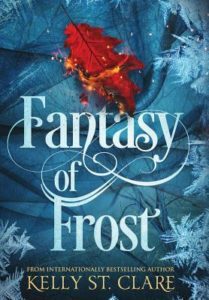 Tainted Accords by Kelly St. Clare
Tainted Accords by Kelly St. ClareI know many things. What I am capable of, what I will change, what I will become. But there is one thing I will never know… The veil I’ve worn from birth carries with it a terrible loneliness; a suppression I cannot imagine being free of. My mother will always hate me. Her court will always shun me. When the peace delegation arrives from the savage world of Glacium, my life is shoved wildly out of control by the handsome Prince Kedrick who, for unfathomable reasons, shows me kindness.
Sometimes it takes the world bringing you to your knees to find that spark you thought forever lost. Sometimes it takes death to show you how to live.
This is a 4-book self-published series.
 Cashmere by Temple West
Cashmere by Temple WestRelieved that her nightmares have ended, Caitlin is disturbed to find that something even stranger has taken their place.
Determined to get on with her life, even amid a crazy paranormal manhunt, she applies for a competitive summer fashion internship in New York. Searching desperately for answers about what Caitlin might be, how Adrian’s father is involved, and where Lucian has been kidnapped to, Caitlin and Adrian must rely on each other to survive. But when the truth finally comes to light, the consequences are unimaginable.
And the question still haunts them both: even if they survive, how will they deal with the fact that Adrian is immortal and Caitlin is not?
This is the sequel to West’s traditionally-published Velvet.
November 26, 2018
Nonfiction November, Week 5: Books Added To My To-Read This Month
This has been such a fun month of reading posts about nonfiction and subsequently adding a ton of books to my own TBR.
Week 5: (Nov. 26 to 30) – New to My TBR (Katie @ Doing Dewey): It’s been a month full of amazing nonfiction books! Which ones have made it onto your TBR? Be sure to link back to the original blogger who posted about that book!
____________________
I commented on so many blogs this month, which is what made taking part in Nonfiction November so rewarding. That said, I did not do a great job of noting which books I added to my TBR from which posts. Consider this round-up of books I discovered this month attributed to any and every one of you who mentioned them and piqued my interest.
In no particular order, with descriptions from Goodreads, here’s what I popped on my TBR!
Print Nonfiction TBR Adds
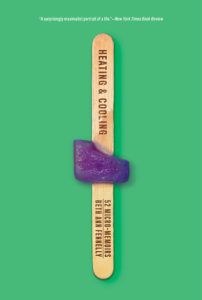 Heating Cooling: 52 Micro-Memoirs by Beth Ann Fennelly
Heating Cooling: 52 Micro-Memoirs by Beth Ann FennellyThe 52 micro-memoirs in genre-defying Heating Cooling offer bright glimpses into a richly lived life, combining the compression of poetry with the truth-telling of nonfiction into one heartfelt, celebratory book. Ranging from childhood recollections to quirky cultural observations, these micro-memoirs build on one another to arrive at a portrait of Beth Ann Fennelly as a wife, mother, writer, and deeply original observer of life’s challenges and joys.
Some pieces are wistful, some wry, and many reveal the humor buried in our everyday interactions. Heating Cooling: 52 Micro-Memoirs shapes a life from unexpectedly illuminating moments, and awakens us to these moments as they appear in the margins of our lives.
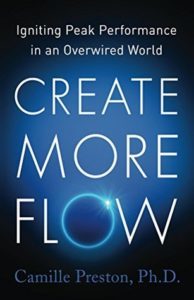 Create More Flow: Igniting Peak Performance in an Overwired World by Camille Preston
Create More Flow: Igniting Peak Performance in an Overwired World by Camille PrestonIn today’s overwired world, we are expected to be always on and always connected, but this approach has consequences. Workplace engagement is at an all-time low and complaints about work-life balance are at an all-time high. In the quest to optimize while restoring balance, more people than ever before are now embracing flow.
When we are in flow, we are in the zone. When we are in flow, we are more creative and more productive. But flow isn’t just about unlocking engagement and impact in the workplace. Flow rests on our ability to take care of our bodies, wellness, and work-life balance. Create More Flow introduces the concept of flow, offers compelling evidence for its impact, and provides actionable strategies to start experiencing more flow more often. This is a must-read book for anyone who craves more joy in their work and life.
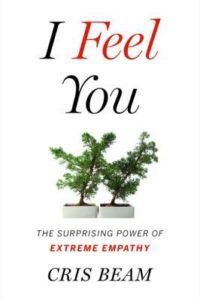 I Feel You: The Surprising Power of Supreme Empathy by Cris Beam
I Feel You: The Surprising Power of Supreme Empathy by Cris BeamEvery generation, a phrase enters our consciousness. In the sixties it was civil rights; in the eighties, it was self-esteem; now our word is empathy.
But what actually is empathy? Is it just one thing? Is it inherited? Can it be taught? Is ‘corporate empathy’ an oxymoron? And is empathy always a desirable human value?
Cris Beam tackles these questions and more as she journeys from neuroscience labs, to classrooms; from a reconciliation program in the US, to South Africa, where the first children born since Apartheid are coming of age. She talks to scientists studying mirror neurons and to teachers helping children identify emotions, to victims of childhood abuse, and to those attempting the most difficult empathy of all: empathy for the genocidal state. Along the way, she examines her own past and family relationships, and discovers what it means to ‘feel you’ — and how we can all apply empathy to our complex lives.
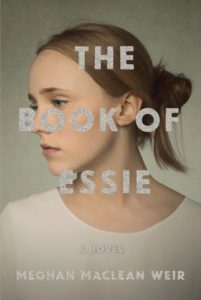 The Book of Essie by Meghan MacLean Weir (I know it’s fiction! But I added a fiction title this month, too!)
The Book of Essie by Meghan MacLean Weir (I know it’s fiction! But I added a fiction title this month, too!)Esther Ann Hicks–Essie–is the youngest child on Six for Hicks,a reality television phenomenon. She’s grown up in the spotlight, both idolized and despised for her family’s fire-and-brimstone brand of faith. When Essie’s mother, Celia, discovers that Essie is pregnant, she arranges an emergency meeting with the show’s producers: Do they sneak Essie out of the country for an abortion? Do they pass the child off as Celia’s? Or do they try to arrange a marriage–and a ratings-blockbuster wedding? Meanwhile, Essie is quietly pairing herself up with Roarke Richards, a senior at her school with a secret of his own to protect. As the newly formed couple attempt to sell their fabricated love story to the media–through exclusive interviews with an infamously conservative reporter named Liberty Bell–Essie finds she has questions of her own: What was the real reason for her older sister leaving home? Who can she trust with the truth about her family? And how much is she willing to sacrifice to win her own freedom?
Audiobook Nonfiction TBR Adds
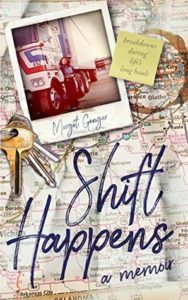 Shift Happens: Breakdowns During Life’s Long Hauls by Margot Ganger
Shift Happens: Breakdowns During Life’s Long Hauls by Margot GangerOut of desperation to escape the confines of her small, northern California town, in 1979, Genger breaks every rule of her social class, gender, and upbringing to become a long-haul truck driver. Shift Happens, is a twenty-first Century incarnation of the classic voyage to find one’s self, and one’s homeland. By facing her mental health and addiction demons, at the age of 28, she sees her role as a young woman flip-flop from cheerleader, girl friend, young wife, sex-symbol to a strong, self-determined individual who knows what she wants and how to succeed.
Along the way, Margot discovers the many facets of America—its beauty and its meanness—and eventually realizes what she values in ‘home.’ Ms. Genger’s gift of description paints the majesty of the beaches, mountains, meadows, and skyscapes of the countryside, and captures the colors and grit of our cities, truck stops, and underground lives of long-haul truck drivers.
Shift Happens will make you laugh, cringe, and celebrate as you meet Margot’s driving partners, Southerners, Yankees, East Coast, West Coast, and Middle Americans of all stripes and colors as she delivers everything from Hustler Magazines to Washington State apples.
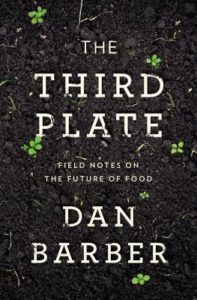 The Third Plate: Field Notes on the Future of Food by Dan Barber
The Third Plate: Field Notes on the Future of Food by Dan BarberBarber explores the evolution of American food from the ‘first plate,’ or industrially-produced, meat-heavy dishes, to the ‘second plate’ of grass-fed meat and organic greens, and says that both of these approaches are ultimately neither sustainable nor healthy. Instead, Barber proposes Americans should move to the ‘third plate,’ a cuisine rooted in seasonal productivity, natural livestock rhythms, whole-grains, and small portions of free-range meat.
 Against Empathy: The Case for Rational Compassion by Paul Bloom
Against Empathy: The Case for Rational Compassion by Paul BloomWe often think of our capacity to experience the suffering of others as the ultimate source of goodness. Many of our wisest policy-makers, activists, scientists, and philosophers agree that the only problem with empathy is that we don’t have enough of it.
Nothing could be farther from the truth, argues Yale researcher Paul Bloom. In AGAINST EMPATHY, Bloom reveals empathy to be one of the leading motivators of inequality and immorality in society. Far from helping us to improve the lives of others, empathy is a capricious and irrational emotion that appeals to our narrow prejudices. It muddles our judgment and, ironically, often leads to cruelty. We are at our best when we are smart enough not to rely on it, but to draw instead upon a more distanced compassion.
Basing his argument on groundbreaking scientific findings, Bloom makes the case that some of the worst decisions made by individuals and nations—who to give money to, when to go to war, how to respond to climate change, and who to imprison—are too often motivated by honest, yet misplaced, emotions. With precision and wit, he demonstrates how empathy distorts our judgment in every aspect of our lives, from philanthropy and charity to the justice system; from medical care and education to parenting and marriage. Without empathy, Bloom insists, our decisions would be clearer, fairer, and—yes—ultimately more moral.
Brilliantly argued, urgent and humane, AGAINST EMPATHY shows us that, when it comes to both major policy decisions and the choices we make in our everyday lives, limiting our impulse toward empathy is often the most compassionate choice we can make.
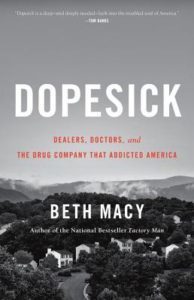 Dopesick by Beth Macy
Dopesick by Beth MacyBeth Macy takes us into the epicenter of America’s twenty-plus year struggle with opioid addiction. From distressed small communities in Central Appalachia to wealthy suburbs; from disparate cities to once-idyllic farm towns; it’s a heartbreaking trajectory that illustrates how this national crisis has persisted for so long and become so firmly entrenched.
Beginning with a single dealer who lands in a small Virginia town and sets about turning high school football stars into heroin overdose statistics, Macy endeavors to answer a grieving mother’s question-why her only son died-and comes away with a harrowing story of greed and need. From the introduction of OxyContin in 1996, Macy parses how America embraced a medical culture where overtreatment with painkillers became the norm. In some of the same distressed communities featured in her bestselling book Factory Man, the unemployed use painkillers both to numb the pain of joblessness and pay their bills, while privileged teens trade pills in cul-de-sacs, and even high school standouts fall prey to prostitution, jail, and death.
Through unsparing, yet deeply human portraits of the families and first responders struggling to ameliorate this epidemic, each facet of the crisis comes into focus. In these politically fragmented times, Beth Macy shows, astonishingly, that the only thing that unites Americans across geographic and class lines is opioid drug abuse. But in a country unable to provide basic healthcare for all, Macy still finds reason to hope-and signs of the spirit and tenacity necessary in those facing addiction to build a better future for themselves and their families.
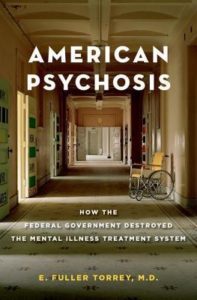 American Psychosis: How the Federal Government Destroyed the Mental Illness Treatment System by E. Fuller Torrey
American Psychosis: How the Federal Government Destroyed the Mental Illness Treatment System by E. Fuller TorreyIn 1963, President John F. Kennedy delivered an historic speech on mental illness and retardation. He described sweeping new programs to replace “the shabby treatment of the many millions of the mentally disabled in custodial institutions” with treatment in community mental health centers. This movement, later referred to as “deinstitutionalization,” continues to impact mental health care. Though he never publicly acknowledged it, the program was a tribute to Kennedy’s sister Rosemary, who was born mildly retarded and developed a schizophrenia-like illness. Terrified she’d become pregnant, Joseph Kennedy arranged for his daughter to receive a lobotomy, which was a disaster and left her severely retarded.
Fifty years after Kennedy’s speech, E. Fuller Torrey’s book provides an inside perspective on the birth of the federal mental health program. On staff at the National Institute of Mental Health when the program was being developed and implemented, Torrey draws on his own first-hand account of the creation and launch of the program, extensive research, one-on-one interviews with people involved, and recently unearthed audiotapes of interviews with major figures involved in the legislation. As such, this book provides historical material previously unavailable to the public. Torrey examines the Kennedys’ involvement in the policy, the role of major players, the responsibility of the state versus the federal government in caring for the mentally ill, the political maneuverings required to pass the legislation, and how closing institutions resulted not in better care – as was the aim – but in underfunded programs, neglect, and higher rates of community violence. Many now wonder why public mental illness services are so ineffective. At least one-third of the homeless are seriously mentally ill, jails and prisons are grossly overcrowded, largely because the seriously mentally ill constitute 20 percent of prisoners, and public facilities are overrun by untreated individuals. As Torrey argues, it is imperative to understand how we got here in order to move forward towards providing better care for the most vulnerable.
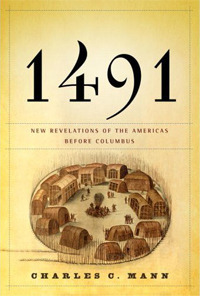 1491: New Revelations of the Americas Before Columbus by Charles C. Mann
1491: New Revelations of the Americas Before Columbus by Charles C. MannA groundbreaking study that radically alters our understanding of the Americas before the arrival of the Europeans in 1492.
Traditionally, Americans learned in school that the ancestors of the people who inhabited the Western Hemisphere at the time of Columbus’s landing had crossed the Bering Strait twelve thousand years ago; existed mainly in small, nomadic bands; and lived so lightly on the land that the Americas was, for all practical purposes, still a vast wilderness. But as Charles C. Mann now makes clear, archaeologists and anthropologists have spent the last thirty years proving these and many other long-held assumptions wrong.
In a book that startles and persuades, Mann reveals how a new generation of researchers equipped with novel scientific techniques came to previously unheard-of conclusions. Among them:
In 1491 there were probably more people living in the Americas than in Europe.
Certain cities–such as Tenochtitlán, the Aztec capital–were far greater in population than any contemporary European city. Furthermore, Tenochtitlán, unlike any capital in Europe at that time, had running water, beautiful botanical gardens, and immaculately clean streets.
The earliest cities in the Western Hemisphere were thriving before the Egyptians built the great pyramids.
Pre-Columbian Indians in Mexico developed corn by a breeding process so sophisticated that the journal Science recently described it as “man’s first, and perhaps the greatest, feat of genetic engineering.”
Amazonian Indians learned how to farm the rain forest without destroying it–a process scientists are studying today in the hope of regaining this lost knowledge.
Native Americans transformed their land so completely that Europeans arrived in a hemisphere already massively “landscaped” by human beings.
Mann sheds clarifying light on the methods used to arrive at these new visions of the pre-Columbian Americas and how they have affected our understanding of our history and our thinking about the environment. His book is an exciting and learned account of scientific inquiry and revelation.
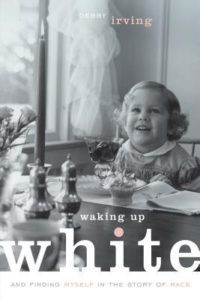 Waking up White, and Finding Myself in the Story of Race by Debby Irving
Waking up White, and Finding Myself in the Story of Race by Debby IrvingWaking Up White is the book Irving wishes someone had handed her decades ago. By sharing her sometimes cringe-worthy struggle to understand racism and racial tensions, she offers a fresh perspective on bias, stereotypes, manners, and tolerance. As Irving unpacks her own long-held beliefs about colorblindness, being a good person, and wanting to help people of color, she reveals how each of these well-intentioned mindsets actually perpetuated her ill-conceived ideas about race. She also explains why and how she’s changed the way she talks about racism, works in racially mixed groups, and understands the antiracism movement as a whole.
Nonfiction Read In November
And just for fun, here’s a look at the nonfiction books I read this month (& the one that I’m just about done with!).
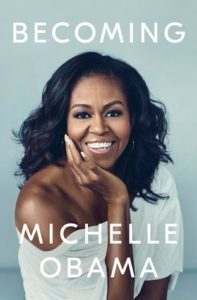 Becoming by Michelle Obama (audio)
Becoming by Michelle Obama (audio)Currently reading and LOVING. I love that Michelle reads the audio.
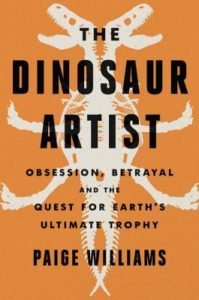 The Dinosaur Artist: Obsession, Betrayal, and The Quest for Earth’s Ultimate Trophy by Paige Williams
The Dinosaur Artist: Obsession, Betrayal, and The Quest for Earth’s Ultimate Trophy by Paige WilliamsAt times, the history of both fossil trade and Mongolia get a little overwhelming to the otherwise immersive narrative, but a really fascinating book about commercial fossil hunting and selling. Like THE FEATHER THIEF, but with dinosaur fossils. It’s a bloodless crime, and it’s a really fascinating crime in that I’m not entirely sure what Prokopi was really imprisoned for (it’s a lot of legal hopscotching, given that it’s an issue of international law, of laws not entirely codified, and of an area of legal weakness, not to mention that some of the things he did were because of someone else who suddenly died in the middle of everything which is rather inconvenient).
The book looks deceptively longer than it is. Over half of the book is research notes. Williams did her work here, and I loved it deeply. Nonviolent true crime within niche industries is a thing I am finding myself loving more and more.
 Paperback Crush: The Totally Radical History of 80s and 90s Teen Fiction by Gabrielle Moss
Paperback Crush: The Totally Radical History of 80s and 90s Teen Fiction by Gabrielle MossThis was just fun. Thoughtful reading on nostalgic teen and tween book series from the 80s and 90s, peppered with interviews and insights into the trends and themes of these ubiquitous books. I extra appreciated that Moss highlighted how white and upper class these titles were, while also including the few inclusive titles that did exist (and I’m FASCINATED by Marie G. Lee’s name change to make her less Asian-sounding as an author but she was the first Asian American author to write an Asian American protagonist to be published by a major publisher…racism in the industry has only moved so far).
It’s like reading your favorite blog of pop culture and book history, with an appealing format that makes it easy to devour. I only wish more resources had been included.
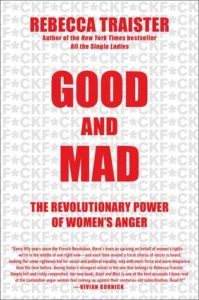 Good and Mad: The Revolutionary Power of Women’s Anger by Rebecca Traister
Good and Mad: The Revolutionary Power of Women’s Anger by Rebecca TraisterA spot-on approach to why women are so angry in today’s western culture. Traister is great at being intersectional and delineating white women’s experiences and alignment with a patriarchal system that can benefit them vs. the anger women of color feel both at the patriarchy and at white women benefitting from it.
This book was written and published quickly — Traister even notes that in her conclusion — but damn if it had waited until after the midterms because it would have added a whole other level of insight, especially relating to women succeeding in their bids for public office.
That all said, it didn’t impact me the way many others were impacted. Maybe because none of it is especially new or especially stirring, as someone who has been in the thick of thinking about and acting on anger for a long, long time. Doesn’t mean it wasn’t good because it was, but rather, it’s possible none of this is surprising or enlightening, even if accurate.
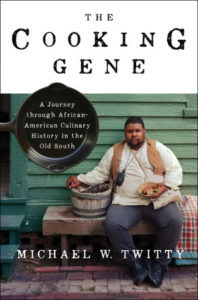 The Cooking Gene: A Journey Through African American Culinary History in the Old South by Michael W. Twitty (audio)
The Cooking Gene: A Journey Through African American Culinary History in the Old South by Michael W. Twitty (audio)A recommendation from a Book Riot pal and it was a good one! Twitty is black, queer, and Jewish, and he’s also a culinary historian with a research and personal interest in the history of food and meals in the south. Twitty narrates, making this more enjoyable to listen to for me than I suspect it would have been reading. It’s technical at times and very rooted in research; even when we learn about Twitty’s own personal history, it’s quite removed and impersonal, which is done purposefully to make a point about the removal of black Americans from their own history. That removal, though, means there’s no coming up for air. Aurally, that works well.
If food history is of interest and especially black food history in the US, this is a must-read.
 Girl, Wash Your Face by Rachel Hollis
Girl, Wash Your Face by Rachel HollisOne of the things Hollis notes is that you pick and choose what you take away from any media you consume. From any conversation you have. I operate under this philosophy and have since it was really introduced to me in yoga teacher training; I’d always been under the assumption if someone is teaching you anything, you should want to take as much away from it as you can. This isn’t realistic and it’s not true to your own development. What you leave is as important as what you take.
There’s a lot in here I really liked. You have to take responsibility for your own life is something that’s been drilled into me since middle school. I had a teacher in 6th grade who read Jorge Luis Borges’s “You Learn” to us, and the idea of watering your own garden, rather than waiting for someone else to bring you flowers, has always, always stuck with me. So that Hollis doesn’t coddle and doesn’t especially cheerlead, is a really refreshing aspect of the book. You are in control of your own life.
The other thing I liked was this: it’s a book with a Christian bent to it, but it’s a book that accepts every type of faith or belief system. Hollis takes a liberal view of religion in a way that is encouraging and encompassing to all, including those who are atheist (like me!). But she doesn’t just do that. She uses her faith as a means of waking up those who use their faith as a crutch to be or to do things that aren’t kind or respectful. The chapter about there being no one right way to be is a particularly good one — she acknowledges her privilege and asks others to do the same. Does it go especially deep? Nah. But this isn’t a book about going deep to become an enlightened and better white person. However, the fact it’s in there at all is noteworthy. It’ll stop a lot of readers in their tracks and consider this very thing.
I also appreciate how much she talks about therapy and getting help.
That said, she’s drank the diet culture cocktail and hasn’t yet figured out how to remove that set of judgements — something she says she tries not to do, judge — from her own life. She isn’t especially shaming of fat people, as weight, she notes, doesn’t determine your health. But, she regularly refers to overweight people in negative lights without offering the same sort of perspective she does in other situations (the harried mother on the plane, the addict whose child is in foster care: the grace she offers them isn’t offered to bodies that are bigger or unhealthy or anything outside of the same media-ideal that she rails against everywhere else). I hope as she grows in her own practices and choices, she wakes up to this part and can reframe these ideas.
If you go in knowing some pieces will really resonate and others will contradict or be unpalatable to you, then you’ll get a lot out of this. Hollis isn’t your mother or your guru. She’s offering what she knows, how she learned, and wants you to do the work yourself for what you want out of your life.
For skeptical readers, I’d suggest what I did: I listened to some of the podcasts before picking up the book to see if they felt okay for proceeding. They did, and thus, I took away more than I was frustrated by here.
(Yes, I’ve read the BuzzFeed article and…it actually gets some things incorrect about the book itself. A lot of that particular piece felt unnecessarily mean spirited toward a woman who runs a successful business catered to middle class white ladies — you could leverage those same accusations against anyone who is a “self help” personality. There are a lot of things to dislike about Hollis’s work but you also need to take the criticisms with the same grain of salt).
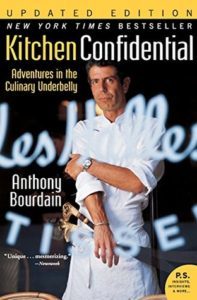 Kitchen Confidential by Anthony Bourdain (audio)
Kitchen Confidential by Anthony Bourdain (audio)I needed some of Anthony’s acerbic wit in my ears. The audiobook, about his adventures in the culinary world, is read by him and a total treat. The production is definitely lacking (the cuts and jumps are not graceful) but if you’re missing Tony, it’s absolutely worth a visit.
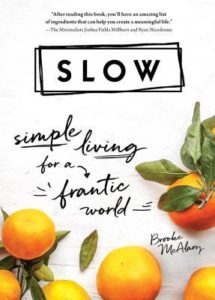 Slow: Simply Living for a Frantic World by Brooke McAlary
Slow: Simply Living for a Frantic World by Brooke McAlaryI appreciate how McAlary emphasizes that slow living isn’t about minimalism and that much of what we see about minimalism is exactly the problem: it’s keeping up with a perception of what we think we should be. Nothing groundbreaking here, but still a nice book to remind you about unplugging, about the power of breathing, and about finding what matters to you and focusing on those things while ignoring the rest. I’d put this on a shelf with BRAIDING SWEETGRASS and THE YEAR OF LESS, both of which have done some mentality-shifting for me. Not so much about stuff but about time and energy.
I did enjoy that there were no prescriptions or “here’s how I did it” lessons here. It’s about doing the work on your own.
November 25, 2018
YA Cover Makeovers: 5 To Check Out and Consider
Part of my job at Book Riot requires spending time perusing Edelweiss in order to know the books that are on the horizon. I don’t write a whole lot about book covers over there, but I do take note of them as I work because there is a lot to say about them.
I’ve been highlighting cover changes in YA since this blog began nearly ten years ago, and though they’re still common, it seems to me that cover changes are happening less frequently than they have in years past. I suspect better initial designs and following tried-and-true trends is part of the reason. Make your title font nice and big with one key, easily-identifiable image — likely illustrated — and you’re going to not only catch eyes on book shelves, but you’re going to have something that shows up great on screens. Perhaps that’s part of it, too. There’s a much better understanding of the power of how covers appear digitally, either on a desktop or on mobile, and so there’s even more consideration in the design process than there ever has been before.
It’s also hard not to take into consideration the fact that YA books are primarily purchased by those over the age of 18 and armed with that knowledge, cover designs in YA mirror many seen in adult fiction. There are good things and there are not-so-good things about that. I’d recommend reading this thoughtful piece from a teen reader on the ways that YA can alienate the very age group it’s meant to reach.
This is the first round-up of recent and upcoming YA book cover changes I’ll share before the year ends. I’ve pulled an interesting range of design makeovers. Some do better in their original hardback while others sparkle a bit more in paperback.
As always, I’d love to hear what you think about the cover changes. What do you prefer of these? If you work with young readers, does one seem like it speaks more to them than the other?
Original hardcover designs are on the left, with the new paperback look on the right.
YA Cover Makeovers
I’m not going to lie: every time I see the hardcover for Margot Harrison’s The Killer In Me, I’m reminded that I want to read it. The vibes it gives are very much a me-book. It’s desolate. There’s a teen girl at the helm with what is either a clear mission or reflection upon a tough job done. It’s stark and striking. But, in being that way, the title of the book gets lost in the background. The font colors really do fade into the landscape, and not in a way that’s useful for actually remembering what the book is called. The font is also small, making it tough to render on screen. Note that on the hardcover, we get a tag line: “The truth can’t stay buried forever.” I love it, and I love how it mirrors the image of the off-centered girl.
The paperback version, which hit shelves in early October, takes away some of the desolation and starkness. But in exchange, it gives a much larger, more readable title, while maintaining the shovel that was on the hardcover. I’m not a huge fan of the way that the author’s name is stacked and shoved at the very top — not easy to read — and it’s interesting that because the focus is on the shovel and on the title, there’s no longer a tag line on the image. This to me reads much more like an adult book cover than a teen book cover, whereas the hardcover feels much more teen because we see what appears to be a younger person on it.
Neither one is better or worse, as they both have interesting and parallel elements to them. As a reader, I’d gravitate toward the hardcover because of the feeling I get from it, but I see that same reasoning being why readers might pick up the paperback.
Talk about a dramatic cover makeover. Caleb Roehrig’s White Rabbit had a frenzy of publicity when it hit shelves earlier this year. I ended up picking it up and liking it, and because it’s a psychological thriller/mystery/horror novel, there’s a high body count. The cover is actually pretty fitting, if not also fairly generic. The title and author names are easy to read, and the white and red color choices stand out against the blue and black palate of the image. There are two main male characters as identified by the shadows with the flashlights. And any time there is blood on a cover, you can count me in (Kimberly pointed out that bloody YA covers are a thing right now). The original hardback tells a reader everything you might want to know about the book and you can immediately place it within its appropriate readership.
The paperback, though, is a whole different rabbit. It’s bright and the contrast of the purple with the bright pink really makes it stand out. Visually, it’s a knockout in that department and it shows well both on screen and, I suspect, will pop on shelves. I’m not entirely sure what’s going on with the pink splotches on the purple — maybe it’s blood? But the use of the knife as the “I” in White is really clever and conveys so much about the feel of the book. This cover has a blurb on it from bestseller Karen McManus, which wasn’t on the original. I’m not usually a blurb fan, but I actually think readers who love One Of Us Is Lying would really be into White Rabbit, so it works as its own reader’s advisory tool.
That said, it does not strike me as a YA book at all. It looks like adult fiction. Again, that means and doesn’t mean anything, but I’m far more likely to see teens reading the hardcover and identifying it as a book for them than I am with the paperback. Perhaps that’s the goal, to get more adults to pick it up in paperback, especially with the McManus endorsement.
I like both takes, but for very different reasons. I actually hope we see a rise in covers like the one on the right (with attention paid to making them look as teen-friendly as possible) because they’re so different. The paperback releases on January 29.
Can we talk about how fun the hardcover of The Epic Crush of Genie Lo by F.C. Yee is? It’s clearly indicating exactly the kind of book it is: a fun, action packed title with a badass female lead. And the tagline! “A demon invasion is no excuse for bad grades” tells you everything about the book’s tone. That said: aside from being an extremely telling cover, it’s fairly generic. It doesn’t pop and doesn’t offer much in terms of the cultural touchstones within the book. The author’s name is small enough on the cover that, when pulling the images together, it got cut off.
The paperback edition of the book, available June 11 (yes, next summer!), is absolutely dreamy and it’s about as different from the hardcover as can be. The color palate is light and airy, and it’s very clear the book is set in San Francisco, with West Asian cultural heritage playing a large part of the story. We still have Genie Lo in the image, but this time, she’s less the focal point, but what’s neat is that all of the elements above her — the dragons, the mountains, the Golden Gate Bridge — comprise who she is. The title font is lovely and flowy. Yee’s name is a little more prominent, though in the paperback edition, the fabulous tagline is no longer there.
Not having read this book, I can’t pinpoint which one feels more true to the actual story. I have a hunch it might be the hardcover, but I suspect, too, that the paperback plays into some very crucial aspects of the book as well. The original cover? Sells to those who want action and adventure. The paperback? Appeals to readers who are eager for a more internal, culturally-enmeshed book. The original cover speaks to readers who want a louder book, while the paperback speaks to those who want a quieter read.
I really dig both of them and would be curious what others think. Neither does it better or worse. They’re just very different.
Veronica Chambers books were among some of the most popular books when I worked in a library that served a large Latinx population, and her latest book is a standalone. The Go-Between hardcover features a lot of fun, trendy elements to it: it’s illustrated, includes a number of bright colors on a black background, and uses the title font cleverly. The “Go” as a pair of glasses — maybe sunglasses, given the palm trees — adds something special to the title itself. There’s no tag line here, and as much as the cover leans into many contemporary YA book cover trends, the cover itself doesn’t tell you much about the book. The girl looks like she might have brown skin, but it’s not entirely clear if she’s meant to be brown skinned or if she’s a girl who has white skin with a dark tan. That ambiguity is only enhanced when you consider the “Go” as sunglasses, along with the waves for water, and the palm trees dotting the cover. It’s not a bad cover but it really doesn’t sell the book.
The paperback, however, is fabulous and tells the reader far more about the book. First and foremost? It’s a brown girl lead character. From her skin tone to the curly hair, there’s no question she is a girl of color. We retain the palm tree motif in the redesign, but they work more cohesively. The font choice for the title is fresher, and the cover itself reminds me quite a bit of I Am Not Your Perfect Mexican Daughter, a book that would be an excellent readalike for this one. This cover features a tagline, and it’s a tagline that really solidifies the comparison to Mexican Daughter and better expresses the tone and feel of the book: “She’s caught between two worlds, but neither will define her.” The girl’s expression, her placement between the trees, the sun peeping over her shoulder. Those aspects are smart.
I don’t dislike the hardcover on this one, but the paperback absolutely nails it. That book is for teens, and it’s a book fans of Sanchez’s title will want to pick up. You can pick up the paperback on April 16.
Finally, this cover change is one that I can’t stop thinking about. Orphan Monster Spy by Matt Killeen is a book about war, and frankly, I can’t figure out how I didn’t get that from the original hardcover. I’ve been convinced it’s a mystery/thriller. Maybe because it’s eerily reminiscent of a YA series that uses the same red and giant face of a girl that is of that genre. Maybe, too, it’s the title itself. Likewise, the blurb — though by Elizabeth Wein — offers no insight into the book’s content either. It becomes more obviously not a mystery/thriller when you notice what’s going on in the background. Those are soldiers, and buried behind the girl’s head are Nazi flags. It takes a lot of careful attention to pick up on those things, and I think that symbolism and clarity is hard to parse out because of the red and giant face of a girl being front and center.
The paperback, due out on February 19, suffers from some challenges, but it isn’t as muddled as the hardcover is. The fonts for both the title and author are far cleaner and less designed, and while we have an image of a girl running away — a big contrast from a girl who is commanding attention — the tagline on the cover gives far more insight into the book’s content. “She’s a liar. A thief. And the Nazis worst nightmare.” We know exactly where the book is situated and we know that the girl is one who is bound and determined to do something. The planes also situate the book in World War 2. The color palate is far more muted than the hardcover, too, which changes the tone of the book. It’s less aggressive and more somber.
The two covers tell two very different stories. For readers, I think the paperback redesign might be more clear in terms of what the book is about.
What do you think? Which cover does it better in each of these? I’d love your thoughts in the comments!
November 22, 2018
This Week Around The Web
Over on Book Riot this week…
Scary Stories to Tell In The Dark is coming back!
Comics about depression that are too accurate to ignore.
Jonathan Van Ness’s “Getting Curious” is the perfect podcast for readers.
Around the web…
I had the utter honor of being a guest on To Write Love On Her Arms.’s new podcast. If you haven’t seen me in person talking about (Don’t) Call Me Crazy, a lot of the talks I’ve given are covered in this conversation. You can listen here.
The Milwaukee Journal Sentinel included (Don’t) Call Me Crazy in their guide to books to give for the holidays. If you want to order a copy, you can go through Workman and grab one for 25% off before November 28. Head here and use the code Algonquin18.
November 19, 2018
November 2018 Debut YA Novels
It’s time again to round up a new batch of debut novels — this time for November!
This round-up includes debut novels, where “debut” is in its purest definition. These are first-time books by first-time authors. I’m not including books by authors who are using or have used a pseudonym in the past or those who have written in other categories (adult, middle grade, etc.) in the past. Authors who have self-published are not included here either.
All descriptions are from Goodreads, unless otherwise noted; I’ve found Goodreads descriptions to offer better insight to what a book is about over WorldCat. If I’m missing any debuts that came out in November from traditional publishers — and I should clarify that indie/small presses are okay — let me know in the comments.
As always, not all noted titles included here are necessarily endorsements for those titles. List is arranged alphabetically by title, with publication dates in parentheses. Starred titles are the beginning of a new series.
Debut YA Novels: November 2018
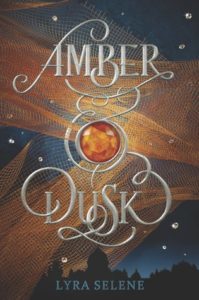 Amber and Dusk by Lyra Selene (11/27)
Amber and Dusk by Lyra Selene (11/27)Sylvie has always known she deserves more. Out in the permanent twilight of the Dusklands, her guardians called her power to create illusions a curse. But Sylvie knows it gives her a place in Coeur d’Or, the palais of the Amber Empress and her highborn legacies.
So Sylvie sets off toward the Amber City, a glittering jewel under a sun that never sets, to take what is hers.
But her hope for a better life is quickly dimmed. The empress invites her in only as part of a wicked wager among her powerful courtiers. Sylvie must assume a new name, Mirage, and begin to navigate secretive social circles and deadly games of intrigue in order to claim her spot. Soon it becomes apparent that nothing is as it appears and no one, including her cruel yet captivating sponsor, Sunder, will answer her questions. As Mirage strives to assume what should be her rightful place, she’ll have to consider whether it is worth the price she must pay.
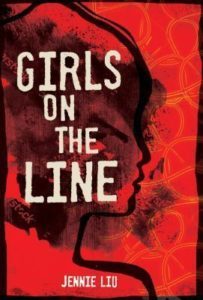 Girls on the Line by Jennie Liu (11/1)
Girls on the Line by Jennie Liu (11/1)A teen pregnancy puts two orphan girls in contemporary China on a collision course with factory bosses, family planning regulators, and a bride trafficker.
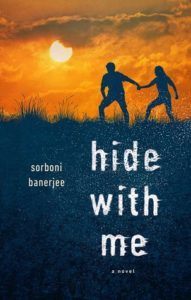 Hide With Me by Sorboni Banerjee (11/6)
Hide With Me by Sorboni Banerjee (11/6)In the dying cornfields of his family’s farm, seventeen-year-old Cade finds a mysterious girl broken and bleeding. She has one request: hide me.
With help from Cade’s best friend, the son of the local veterinarian, the mysterious Jane Doe starts to heal, and details of her past surface. A foster kid looking for a way out, Jane got caught up in the wrong crowd and barely escaped with her life.
Cade has been trapped in the border town of Tanner, Texas all his life and has a difficult past of his own. Reeling from his parents’ separation, he’s focused on one thing: a football scholarship–his one-way ticket out of town.
As the two plan their escapes, Jane and Cade spend their nights in the abandoned barn on the edge of the farm and their days with Cade’s friends: sweet, artistic, Mateo and his vivacious sister Jojo who vows to be president one day.
But just across the border in a city in Mexico lies the life Jane desperately wants to leave behind–a past filled with drugs and secrets, information she never wanted, and a cartel boss who is watching her every move.
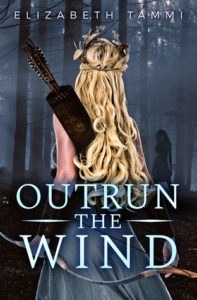 Outrun the Wind by Elizabeth Tammi (11/27)
Outrun the Wind by Elizabeth Tammi (11/27)The Huntresses of Artemis must obey two rules: never disobey the goddess, and never fall in love. After being rescued from a harrowing life as an Oracle of Delphi, Kahina is glad to be a part of the Hunt; living among a group of female warriors gives her a chance to reclaim her strength, even while her prophetic powers linger. But when a routine mission goes awry, Kahina breaks the first rule in order to save the legendary huntress Atalanta.
To earn back Artemis’s favor, Kahina must complete a dangerous task in the kingdom of Arkadia— where the king’s daughter is revealed to be none other than Atalanta. Still reeling from her disastrous quest and her father’s insistence on marriage, Atalanta isn’t sure what to make of Kahina. As her connection to Atalanta deepens, Kahina finds herself in danger of breaking Artemis’ second rule.
She helps Atalanta devise a dangerous game to avoid marriage, and word spreads throughout Greece, attracting suitors willing to tempt fate to go up against Atalanta in a race for her hand. But when the men responsible for both the girls’ dark pasts arrive, the game turns deadly.
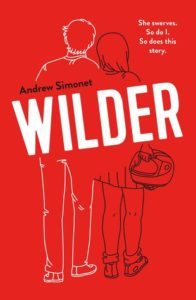 Wilder by Andrew Simonet (11/13)
Wilder by Andrew Simonet (11/13)I met Melissa in the rubber room, a.k.a. in-school suspension. And that’s not her real name.
She had secrets, I had enemies.
“People are either useful or dangerous,” she said. “One or the other.”
“Which one am I?” I said.
“You’re both.”
Meili was right. (That’s her real name.)
You can solve a lot of problems if you don’t mind getting hurt.
Jason Wilder is in permanent in-school suspension for fighting. Meili Wen gets there by breaking a girl’s finger. Jason and Meili don’t just connect; they collide. Two people who would never cross paths―outsiders from radically different backgrounds―they form an exhiliarating, unpredictable bond. When circumstances push, they push back. There’s no plan. And there’s no stopping.
“I am so crap. How can you stand being with me? Don’t answer that or I will crash this thing with both of us on it, swear to god, are you ready?”
Yes. No. Didn’t matter.
I reached both arms around Meili’s waist as we zoomed down the hill.
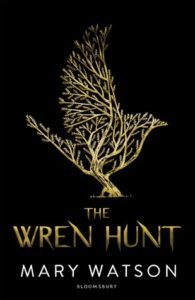 The Wren Hunt by Mary Watson (11/6)
The Wren Hunt by Mary Watson (11/6)Every Christmas, Wren is chased through the woods near her isolated village by her family’s enemies—the Judges—and there’s nothing that she can do to stop it. Once her people, the Augurs, controlled a powerful magic. But now that power lies with the Judges, who are set on destroying her kind for good.
In a desperate bid to save her family, Wren takes a dangerous undercover assignment—as an intern to an influential Judge named Cassa Harkness. Cassa has spent her life researching a transformative spell, which could bring the war between the factions to its absolute end. Caught in a web of deceit, Wren must decide whether or not to gamble on the spell and seal the Augurs’ fate.
November 18, 2018
Nonfiction November, Week 4: Why The Phrase “Reads Like Fiction” Doesn’t Work For Me
I’m going in on this one this week because this is a topic I feel strongly about.
Week 4: (Nov. 19 to 23) – Reads Like Fiction (Rennie @ What’s Nonfiction): Nonfiction books often get praised for how they stack up to fiction. Does it matter to you whether nonfiction reads like a novel? If it does, what gives it that fiction-like feeling? Does it depend on the topic, the writing, the use of certain literary elements and techniques? What are your favorite nonfiction recommendations that read like fiction? And if your nonfiction picks could never be mistaken for novels, what do you love about the differences?
____________________
I really dislike the phrase “reads like fiction” when it comes to describing nonfiction, and it’s hard to put my finger on exactly why. But I’m going to try to dissect this bit by bit.
“Reads like fiction,” is a shorthand way to describe a nonfiction title with a narrative arc that uses “literary techniques” to tell a story. In other words, it’s not a textbook or a guidebook. Instead, it has something akin to a plot, even though nonfiction doesn’t have a plot. Often, it has a thesis or a central theme it’s working to get across.
But we don’t do this sort of description for fiction. I can’t ever recall hearing a fiction title being described as “reads like nonfiction.” Certainly, descriptions about how well-researched or fact-filled a novel is comes up in a review or in a blurb for a book. But it’s not described and, more importantly, held up as good because it “reads like nonfiction.” Yet, that’s how “reads like fiction” comes across when applied to a nonfiction title. The book is championed because it’s got a rhythm and a flow to it that doesn’t feel like a textbook might.
Why, though, do we limit nonfiction to just a couple of categories? There’s nonfiction that “reads like fiction,” and then there’s nonfiction that doesn’t read like fiction. Yet, nonfiction is a very nuanced category of books, filled with a wide array of types of books. Certainly, there are textbooks, there are workbooks, there are guidebooks, and there are “fiction-like” books. But when you break it down further, “fiction-like” books eliminate a whole host of books that don’t fall neatly into the categories of workbooks, textbooks, guidebooks, and other similarly-formatted books.
Do essay collections read like fiction? If so, do they read more like short story collections than a novel? Given that short story collections can often be a hard sell to the average reader, is the same sort of mentality there when it comes to essay collections? Are they more likely to reach a specific audience, rather than a broader reading audience because they don’t “read like fiction?” Or, if they do “read like fiction,” they read more like short stories and therefore, a very specific type of fiction reading experience?
What about memoirs? Memoirs are, of course, a slice of time and experience within an individual’s life, as told through their own words. They might “read like fiction,” but does saying that also diminish and remove the empathy that we as readers should feel because they’re not fiction? Does it also muddy up the idea that someone’s lived experience could be so beyond what we perceive as “normal” that we’re skeptical and therefore able to discredit the story as an exaggeration or pockmarked with untruths? Tara Westover’s Educated is one that comes to mind immediately here: I’ve read many reviews that question the authenticity and the honesty, and I can’t help but wonder if part of the reason — aside from the infamous James Frey A Million Little Pieces debacle — is that the book reads so much like fiction that it’s easy to forget that there was likely immense pain going into the writing of one’s real, lived experience (and, of course, some sexism because that’s a given).
Perhaps the biggie for me is this: who determines what fiction and nonfiction read like? Fiction is such a rich array of stories and story telling styles. This is evident when you think about the fact fiction forms include comics, include verse, include epistolaries, and include other alternate formats. Nonfiction works similarly, but it’s not given the same sort of treatment for its varied formats that also includes comics, verse, epistolaries, and other alternate formats.
These determinations come from a dominate idea of what storytelling, literary techniques, and writing look like, and those determinations are often made by those in power. Cishet, straight, white people, with a strong leaning toward men as opposed to women in this category. The same people who determined the idea of what a Western Canon looked like. Who decided storytelling in English takes on certain structures and sticks to particular conventions and grammatical rules that were, again, created by one segment of people. It’s a limited scope of the potential for literature, and applying those same standards to nonfiction further limits the scope of people outside this demographic to share their truths in ways that are authentic to them and their experiences.
“Reads like fiction” flattens nonfiction and flattens the power of writing. It diminishes researched work and diminishes lived truths. But we return to it as a phrase to describe titles again and again because we haven’t found a language that allows us to better describe what makes a nonfiction title compelling and because we’ve limited ourselves to one frame of reference for talking about books. We haven’t spent the time teasing out the biases that exist in our own understanding of writing and presenting nonfiction. Rooting through oppression requires work.
I sat on a panel at the American Library Association’s conference this year called “Reads like Fiction: Nonfiction You Can’t Put Down.” Authors on the panel included Nicole Chung (All That You Can Ever Know, a memoir), Sarah Weinman (The Real Lolita, a book about the kidnapping of Sally Horner and the building of the book Lolita), Anne Boyd Rioux (Meg, Jo, Beth, and Amy: The Story of Little Women and Why It Matters, about the staying power of Alcott’s Little Women), and Eugenia Cheng (The Art of Logic in an Illogical World, a book about the power of logic and math in making sense of the world at large). Our books have nothing to do with one another and none of the themes carry over. There are personal stories here — my book and Nicole’s book — and there are two books that dig deep into the history and cultural aspects of two classic works of fiction — Sarah’s book and Anne’s book). Eugenia’s book is a book of applied research, presented in a way that anyone can access and better understand the ways we can navigate a challenging world through logic.
This sort of set-up wouldn’t happen in the world of fiction. It’s likely that the memoir-style books would end up on a genre-angled panel digging into that. The two books that present context and research to classic fiction would go into a genre-angled panel digging into that. And the book on logic would maybe fall into a genre-angled panel about applied math, science, and/or philosophy.
In other words, a panel on realistic fiction. A panel on historical fiction. A panel on science fiction.
There wasn’t a lot of room for nuance on the panel. While I loved hearing about all of the panelists books — and I’ve been making my way through them as they’ve published this fall — there was little room for digging into writing nonfiction or about the process behind each of the books. The process for each is so different, and the choices made in how to structure the books so different. But that becomes flattened under the simple description of “reads like fiction.”
I don’t think any of the books I’ve read from this panel, nor my own anthology, read like fiction. They read like the nonfiction styles they were developed to be. My fascination continues in thinking about the choices underpinning how those books were structured, how the formats helped carry the bigger points across.
“Reads like fiction” feels lazy. Certainly, it’s an easy way to sell a book to a skeptical reader. But to sell a book to a reader, the fiction readability comparison isn’t what most are after. They want a book that draws them in, that compels them in some way, and, even when presented a nonfiction title on a topic they were itching to find a novel about, it’s about the way one sells the topic itself. “Reads like fiction” doesn’t mean anything because fiction itself reads in so many ways. The same should be said about nonfiction.
November 15, 2018
This Week at Book Riot
Over on Book Riot this last week…
A round-up of awesome gifts for readers under $20.
Over 70 funny book puns and clever sayings. I hope those of you who do displays or readers advisory steal some of these.
There’s a new episode of Hey YA up this week, too! Eric and I talk about the recent “best of” lists and highlight a host of funny YA books.
In other big news…
(Don’t) Call Me Crazy: 33 Voices Start The Conversation About Mental Health was named one of the 10 best children’s books of 2018 by the Washington Post. What an honor!
November 14, 2018
This Mortal Coil by Emily Suvada
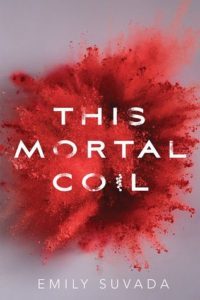 Catarina Agatta lives in a future world where every human has a “panel” that controls their genes, giving them the ability to recode their DNA. The programs to alter human DNA have to be coded by master code-writers and hackers – it’s not something that just anyone can do. Catarina is a master though; she takes after her father, Lachlan, a scientist who was kidnapped by the evil organization Cartaxus two years ago. Cartaxus keeps their own programs under copyright, including most importantly those that cure diseases. They’re hoping Lachlan will be able to code a vaccine for the latest disease that’s crippling humanity, one that makes humans go into “the wrath” and kill each other mindlessly, right before they literally explode. Catarina is left to survive on her own, eating those with the disease for immunity, refusing to enter a Cartaxus settlement that protects its residents from the disease because she has unauthorized code in her body, code that saves her life but would be stripped by Cartaxus. But then a young Cartaxus agent named Cole arrives, and he says he’s been sent by Lachlan to help Catarina unlock the key to the vaccine – and everything goes to hell in a handbasket after that (and you thought things were already bad).
Catarina Agatta lives in a future world where every human has a “panel” that controls their genes, giving them the ability to recode their DNA. The programs to alter human DNA have to be coded by master code-writers and hackers – it’s not something that just anyone can do. Catarina is a master though; she takes after her father, Lachlan, a scientist who was kidnapped by the evil organization Cartaxus two years ago. Cartaxus keeps their own programs under copyright, including most importantly those that cure diseases. They’re hoping Lachlan will be able to code a vaccine for the latest disease that’s crippling humanity, one that makes humans go into “the wrath” and kill each other mindlessly, right before they literally explode. Catarina is left to survive on her own, eating those with the disease for immunity, refusing to enter a Cartaxus settlement that protects its residents from the disease because she has unauthorized code in her body, code that saves her life but would be stripped by Cartaxus. But then a young Cartaxus agent named Cole arrives, and he says he’s been sent by Lachlan to help Catarina unlock the key to the vaccine – and everything goes to hell in a handbasket after that (and you thought things were already bad).
There’s a lot going on in this book, and the synopsis above only gets at a portion of it. This is one of those books where it’s best to just strap yourself in and go along for the ride. It’s full of twists and turns, with a whopper of a reveal near the end that took me completely by surprise but in retrospect was carefully planned and executed by Suvada. I always appreciate a well-plotted novel, and this is a great example: readers should pay careful attention to every detail Suvada drops, because it may be important later on. This Mortal Coil also feels more cutting-edge than any of the other futuristic sci-fi novels I’ve read recently. I can’t think of another book for teens that uses the mapping of the human genome and subsequent gene editing (with tools like CRISPR) as a major plot point. It’s fascinating to me, in part because it’s just entering the mainstream conversation, and in part because the possibilities (practical and story-wise) seem endless. Tech like this makes me feel like I’m living in the future; Emily Suvada brought it to life. Whether her vision of what gene editing can actually do is realistic or not remains to be seen, and is a question perhaps best left to scientists. But it does make for a good story.
I liked Catarina as a protagonist. She’s smart and reacts realistically to every obstacle thrown at her (and there are many). There’s a romance that develops between her and Cole, which feels natural and unforced. The twist near the end gives it greater depth while simultaneously adding to its complications. Catarina is also a human teenager, though, despite her extraordinary intelligence. She’s easily led by the bad guys (and just who the bad guys are is not always clear), feels the betrayal of her loved ones keenly, and sometimes acts in a way that is not in her best interest out of fear or stubbornness.
While the book isn’t perfect (it meanders sometimes in the middle, the gene-coding aspects are not always well-explained), it’s a cut above most other recent apocalyptic/post-apocalyptic stories, particularly those featuring a plague. The gene-coding angle is not one that’s been done in this way before, and the twisty plot will keep readers hooked. This is one to seek out.
November 11, 2018
Nonfiction November, Week 3: Dig Into Food Nonfiction (Be The Expert)
Let’s dig into some nonfiction focused all around the topic of food.
Week 3: (Nov. 12 to 16) – Be The Expert/Ask the Expert/Become the Expert (Julie @ JulzReads): Three ways to join in this week! You can either share three or more books on a single topic that you have read and can recommend (be the expert), you can put the call out for good nonfiction on a specific topic that you have been dying to read (ask the expert), or you can create your own list of books on a topic that you’d like to read (become the expert).
____________________
I spent a long time toying with what I wanted to be the expert on for this week’s prompt. I had an idea for writing about YA nonfiction about women athletes because there are some great titles out there (hello to books like Proud by Ibtihaj Muhammad, Forward by Abby Wambach, and Taking Flight by Michaela DePrince), and I also toyed with rounding up some of the productivity/happy living books that have left an impact on me in some way (though unfortunately, this tends to be really white in terms of authorship).
Finally, as I scrolled through my list of nonfiction reads, I realized there were a ton of great books — many of which are older, deep backlist titles — about food. These books are about the eating and consumption of food, the history of food, as well as the culinary world. They include memoirs and histories and books that blend a little bit of both.
I’ve read each of these titles, though some are more recent in memory than others. I’ve consumed them in both print and in audio, which has only made the experiences more delicious.

Sumptuous Food Nonfiction
The Cooking Gene by Michael W. Twitty
Part memoir, part history, about American southern food and cooking. Twitty is a black, gay, and Jewish man whose passion for food and its origins is palpable.
Eating Animals by Jonathan Safran Foer
If you’ve ever considered going meat-free in your diet, this book will speak to you. Even for carnivores, Foer’s book is appealing. It’s about how and why one chooses to eat the way they do, and more, it’s about becoming aware of where your food comes from, regardless of your dietary choices.
Fortune Cookie Chronicles by Jennifer 8 Lee
Did you know there are more Chinese restaurants in America than McDonalds, Burger King, and Wendys establishments combined? This history of the growth of the Chinese restaurant in America is absorbing, well-written, and really makes clear that what we eat in a Chinese restaurant here in the west isn’t really Chinese food (and that the Chinese fortune cookie was really invested in Japan!).
Hungry Planet by Peter Menzel and Faith D’Aluisio
A photographic study of families around the world and what it is they eat. Super fascinating, and my only complaint is that there hasn’t been an update since this was published in 2005. I’d be fascinated to see how things have changed in the nearly 15 years since the original project, as we’ve become a more global food world.
Love, Loss, and What We Ate by Padma Lakshmi
Lakshmi is, of course, known for her role in food television, but this memoir goes much deeper than that experience. It’s about growing up in more than one continent and how that shaped her palate and interest in the culinary world. Raw, honest, and tender.
Kitchen Confidential by Anthony Bourdain
I only wish that Anthony were around still and could give us yet another update to this book because I have a feeling he’d change his views on some aspects of the industry. It’s an unfiltered, often crude, look at the culinary underbelly and his own experiences in the restaurant business in New York City. There’s clear passion and dedication for food. On audio, Bourdain’s voice and tone are stand out.
Relish: My Life In The Kitchen by Lucy Knisley
A lovely, immersive graphic memoir about Knisley’s love for all things food. Lucy shares stories of growing up in a family that relishes in cooking and eating good food. But it’s not an upturned-nose sort of foodie memoir. It’s about the joy of and celebration of the role food plays in a social way and in a very personal way. It doesn’t matter if that food is direct from the chicken coop in your yard or from the fast food joint miles away.
Salt, Sugar, Fat by Michael Moss
This book pairs really nicely with Foer’s, in that it’s a dive into the greater industry of food. An in-depth and compelling look at the three ingredients that have allowed the processed food industry to flourish and take hold of the American diet. Moss is not objective here, and he has no reason to be. He comes at this with the question of why and explores how the choices made for the bottom line utterly harm the humans who are sucked into such addicting foods. He doesn’t shame people for enjoying them, but rather, explores why they become what they are to the American diet: three ingredients that promote more eating of the same three ingredients.


